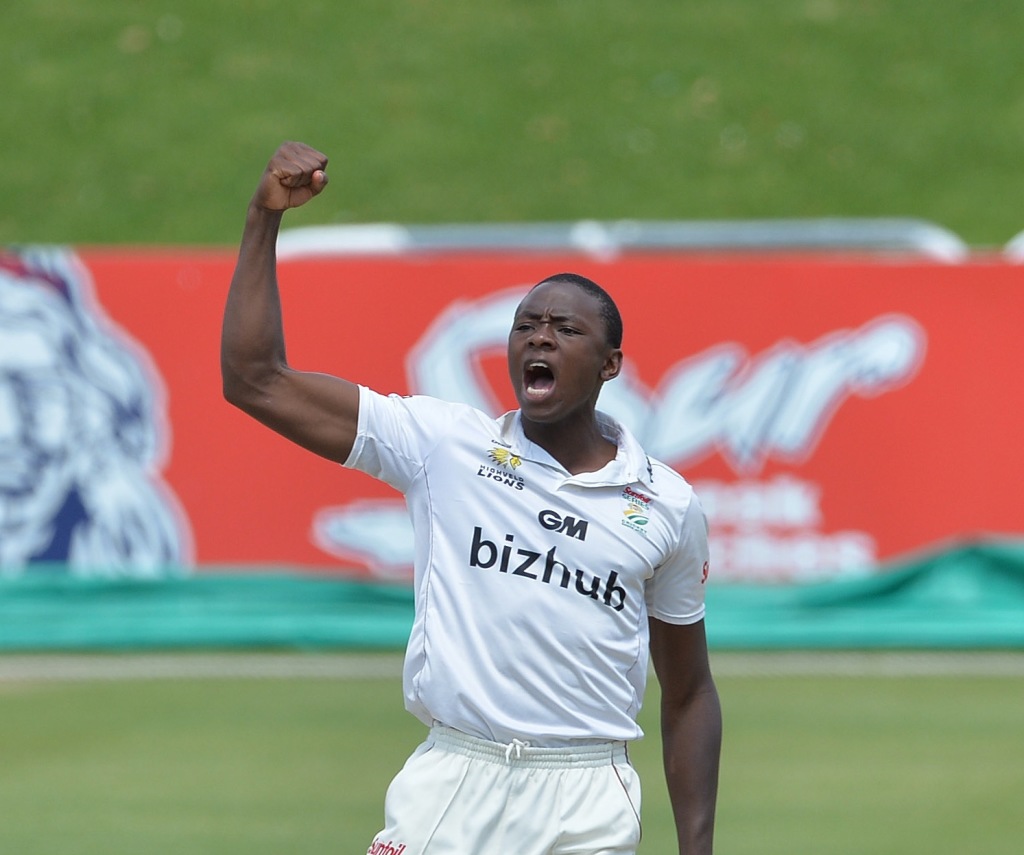Kagiso Rabada is the cover feature in the latest SACricket magazine, on the shelves now. Jonhenry Wilson looks at him.
Subjected to the inconsistency and inadequacy of Wayne Parnell and underperformance of several domestic seamers, South African fans, pundits and the media are largely justified in chasing an immediate, or at least noteworthy, alternative. Premature expectation, however, must not befall Kagiso Rabada, and thankfully has been recognised in the monthly management of the young tyke.
Granted, Rabada was debuted at international level some 18 months sooner than former South Africa U19 coach Ray Jennings expected, but that stint spanned just seven weeks and has since taken a backseat to a full three months of hard graft across the country’s first-class circuit.
Veritable slaughter at the hands of West Indian big-hitter Chris Gayle in January’s opening T20I in Cape Town was a blessing in disguise. While fetching all of 38 runs across four quick overs hurt, the isolated expense all but ensured Rabada will eventually return to the international game accustomed to the lows and not yet privy to the personal highs. Marchant de Lange, by contrasting example, enjoyed a terrific performance on international debut but has battled injury and fragile form since.
‘Kagiso is inexperienced but has got a lot of pace, so I wanted to put him on the backfoot. This is a learning process for him. He is very young but he is a strong individual and he will be a quality fast bowler for South Africa in the future,’ Gayle acknowledged then. Rabada’s chance at T20I level will come again, perhaps as early as August, when New Zealand arrive for a couple of T20Is.
Test match cricket, though, could beckon even earlier. Low and slow pitches in Chittagong won’t be ideal for the 19-year-old speedster, but would satisfy Lions coach Geoffrey Toyana’s eagerness to ‘see how he plays in different conditions’. The Wanderers in Johannesburg, Kingsmead in Durban and other pace-friendly venues served Rabada well this past season – to the tune of 36 first-class wickets in eight four-day matches at 20.88 apiece, including a record-breaking haul of 14-105 against the Dolphins.
‘That is key in his development, he needs to gain experience in other conditions. That’s what you need to do to play Test cricket,’ added Toyana to Times Live. July’s low-key matches against Bangladesh would go along way in facilitating this growth. Whether the national selectors rest Dale Steyn or Morne Morkel and blood Rabada for this tour remains in the balance, but opportunity knocks to measure the bowling bench strength, and extend the longevity of the first-choice core, of a team determined to accrue an extended stay at the helm of the International Cricket Council’s Test rankings.
Handed a one-year contract by Cricket South Africa in March, Rabada has gained substantially more than Temba Bavuma, Simon Harmer, Dane Piedt, Rilee Rossouw, Mthokozisi Shezi, Beuran Hendricks and Stiaan van Zyl, who have all earned smaller, high-performance deals. The significance of Rabada being contractually categorised alongside fellow seamers Kyle Abbott, Wayne Parnell, Vernon Philander and Lonwabo Tsotsobe – ahead of, say, Shezi or Hendricks – speaks volumes of his future value.
The prediction Jennings offered, recognition Gayle gifted and insight Toyana affords sits well with the advice frequently solicited by a young man in the twilight of his teenage years. His inquiring mind demands answers, his tender age needs nurturing, youthful exuberance requires moderation, and relative success must be complemented by a humble approach. The esoteric, intangible elements of his game, though, can’t supersede appropriate management of the physical rigours.
‘If injuries don’t interfere, Kagiso can represent the Proteas in many, many Tests and ODIs. We want to manage him. Not rest him, but rather manage his workload,’ said Toyana, again, of the prodigious talent. South African Cricket has walked the plighted path of injury-prone fast bowlers, including Brett Schultz, Mfuneko Ngam and Victor Mpitsang, several times. Treatment of problematic ankles, backs and other body parts has certainly improved since the days of Ngam and company, but out-and-out fast bowling is still a physically taxing art, arguably more so now than then.
Australia have positive and negative modern-day precedents to heed. The impressionable frames of Josh Hazlewood, Pat Cummins and James Pattinson were not necessarily correctly fostered by those in the know during the formative years of their careers, which resulted in long-term injury lay-offs. The handling of the trio and Mitchell Starc, Mitchell Johnson and others is now considerably more picky. Short bursts, rather than lengthy spells are now the norm in ODI and Test cricket. Fast-bowler rotation through matches and series is essentially obligatory nowadays. This must be conducted in the handling of Rabada, too, when he is allowed a longer stay in international competition.
Rabada’s demolition of the Dolphins bettered the 14-110 achieved by his idol, Dale Steyn, against the Eagles eight years ago by a mere five runs. The superior numeracy of the prolific figures was marginal, but the timing holds plenty of value. Tsotsobe’s post-ankle surgery fall from favour, Parnell’s problems, De Lange’s growing pains and Abbott’s climb up the pecking order are gradually necessitating the arrival of a new incumbent, or at the very least additional support for the untouchable Test trinity of Steyn, Morkel and Philander. If not Chris Morris or Rory Kleinveldt, then surely Rabada.
When, or to what extent, the young man hailed as a ‘thoroughbred’ fast bowler by Allan Donald is genuinely let loose on world cricket, though, is best forecast by the former South African pace ace: ‘He is a great athlete and he has got an immaculate work ethic. He has got some gas for a 19-year-old and he is built like a racehorse.
‘His time will come, there is no doubt about it. He wants it badly, that’s the most impressive thing about Kagiso. It will really be about how we look after KG over the next few years and that we don’t unleash him at the wrong time. We’ve got a very exciting young star on the horizon.’ Indeed.
This feature appears in the current issue of SACricket magazine, on sale NOW!





